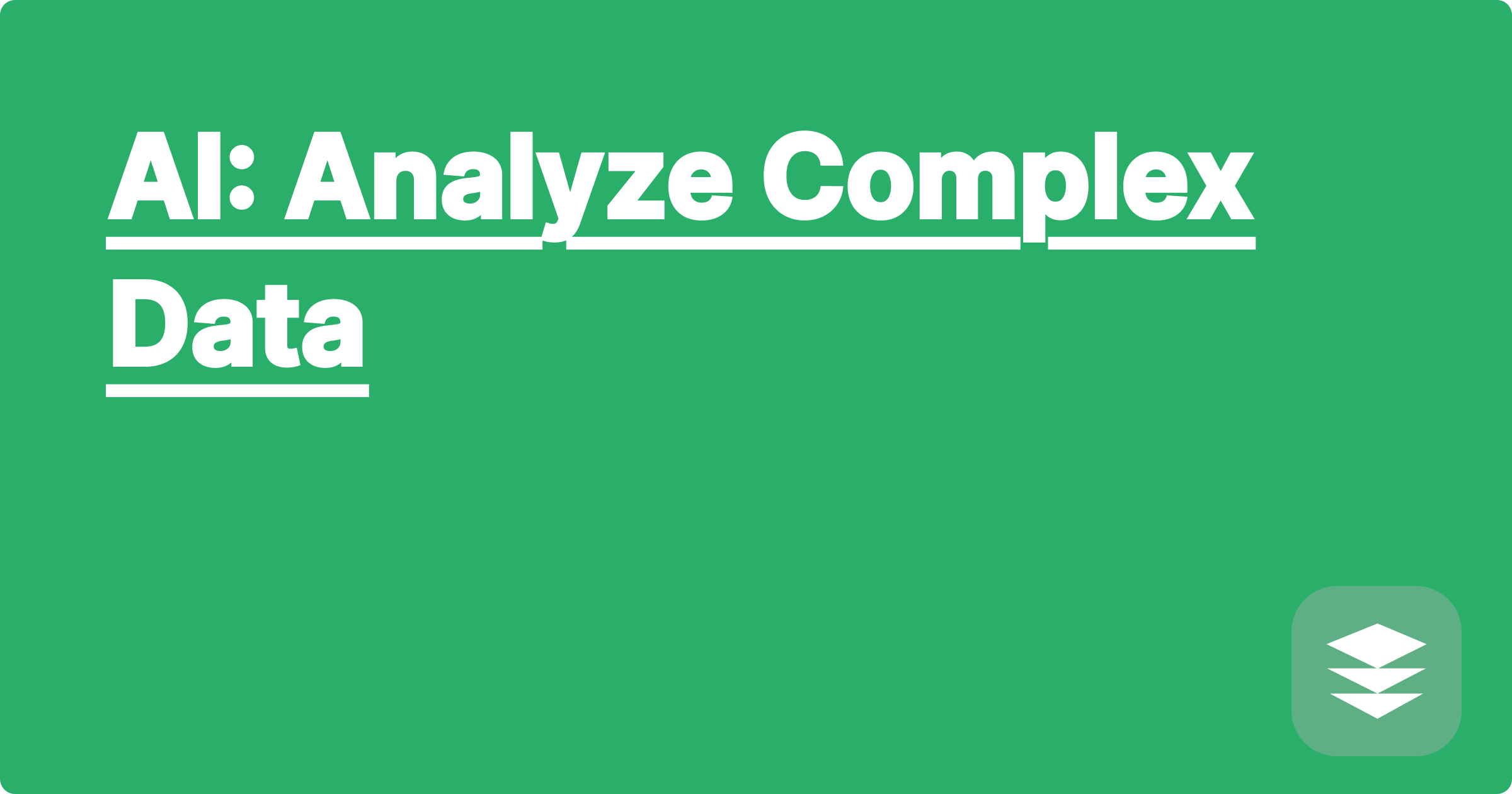
STEM fields are constantly grappling with the challenge of analyzing increasingly complex datasets. From genomics research generating terabytes of data to astronomical observations capturing the vastness of the universe, traditional data analysis methods often struggle to keep pace. Artificial intelligence (AI) offers a powerful suite of tools to tackle this challenge, providing researchers with the ability to extract meaningful insights from complex data, uncover hidden patterns, and accelerate scientific discovery. This represents a paradigm shift in how we approach scientific inquiry, opening new avenues for exploration and innovation.
This evolution in data analysis is particularly relevant for STEM students and researchers. Mastering AI-driven data analysis techniques is no longer a luxury but a necessity for staying competitive in today's research landscape. By leveraging AI tools, students and researchers can enhance their analytical capabilities, accelerate their research progress, and contribute to groundbreaking discoveries across diverse STEM disciplines. These skills are crucial for both academic success and future career prospects in a world increasingly reliant on data-driven insights.
The complexity of data in modern STEM research presents several significant challenges. Data volume is a major hurdle, as experiments and simulations now routinely generate massive datasets that can overwhelm traditional analytical tools. Data velocity, the speed at which data is generated and needs to be processed, also poses a significant challenge, particularly in real-time applications like monitoring environmental changes or controlling complex systems. Data variety adds another layer of complexity, with researchers needing to integrate and analyze data from diverse sources, including sensors, instruments, simulations, and databases. This often involves dealing with structured, semi-structured, and unstructured data formats, requiring specialized tools and techniques. Finally, data veracity, the accuracy and reliability of the data, is paramount. Ensuring data quality and handling noisy or incomplete data are crucial for drawing valid conclusions and making informed decisions.
AI provides a powerful toolkit for addressing these data analysis challenges. Machine learning algorithms, a core component of AI, can learn complex patterns and relationships within data without explicit programming. These algorithms can be trained on large datasets to identify hidden trends, predict future outcomes, and classify data into meaningful categories. Natural language processing (NLP) models like ChatGPT and Claude can be used to extract insights from textual data, such as scientific literature, research papers, and experimental notes. They can summarize information, identify key concepts, and even generate hypotheses. Computational knowledge engines like Wolfram Alpha offer a vast repository of scientific knowledge and computational capabilities, enabling researchers to perform complex calculations, access curated datasets, and explore scientific concepts.
The process of using AI for data analysis typically begins with data preparation. This involves cleaning the data, handling missing values, and transforming it into a format suitable for AI algorithms. Next, the appropriate AI tool is selected based on the specific research question and the nature of the data. For example, if the goal is to classify images, a convolutional neural network might be appropriate. If the goal is to analyze text data, an NLP model like ChatGPT or Claude could be used. Once the tool is selected, the model is trained using a portion of the dataset. This involves feeding the algorithm with labeled data so it can learn the underlying patterns. After training, the model's performance is evaluated on a separate dataset to ensure its accuracy and generalizability. Finally, the trained model can be deployed to analyze new data and generate insights.
Consider a researcher studying the effects of a new drug on gene expression. They have generated a large dataset of gene expression levels from treated and control groups. Using a machine learning algorithm like a support vector machine (SVM), they can train a model to classify genes as upregulated or downregulated in response to the drug. The SVM can learn complex patterns in the gene expression data and accurately predict the drug's effect on new genes. Another example involves analyzing scientific literature to identify research trends in a particular field. Using an NLP model like ChatGPT, researchers can process thousands of research papers and extract key concepts, topics, and relationships between them. This can help identify emerging research areas and potential collaborations. Furthermore, Wolfram Alpha can be used to perform complex calculations, such as solving differential equations or calculating statistical significance, directly within the research workflow.
For STEM students and researchers, effectively integrating AI into their work requires a strategic approach. Developing a strong foundation in statistics and machine learning is crucial for understanding the underlying principles of AI algorithms and interpreting their results. Exploring different AI tools and platforms, such as ChatGPT, Claude, and Wolfram Alpha, is essential for identifying the best tool for a given task. Collaborating with other researchers and attending workshops or online courses can provide valuable insights and practical experience. Critically evaluating the results of AI analysis is crucial, as these tools are not infallible and their outputs should always be validated against existing knowledge and experimental data. Finally, staying updated with the latest advancements in AI and data analysis is essential for remaining competitive in this rapidly evolving field.
To effectively leverage AI in STEM research and education, start by identifying specific research problems where AI can offer significant advantages. Explore the various AI tools available and experiment with them on sample datasets. Engage in online communities and forums to connect with other researchers and learn from their experiences. Develop a strong understanding of the ethical implications of using AI in research and ensure responsible data practices. By actively exploring and integrating these powerful tools, STEM students and researchers can unlock new possibilities and drive innovation in their respective fields.